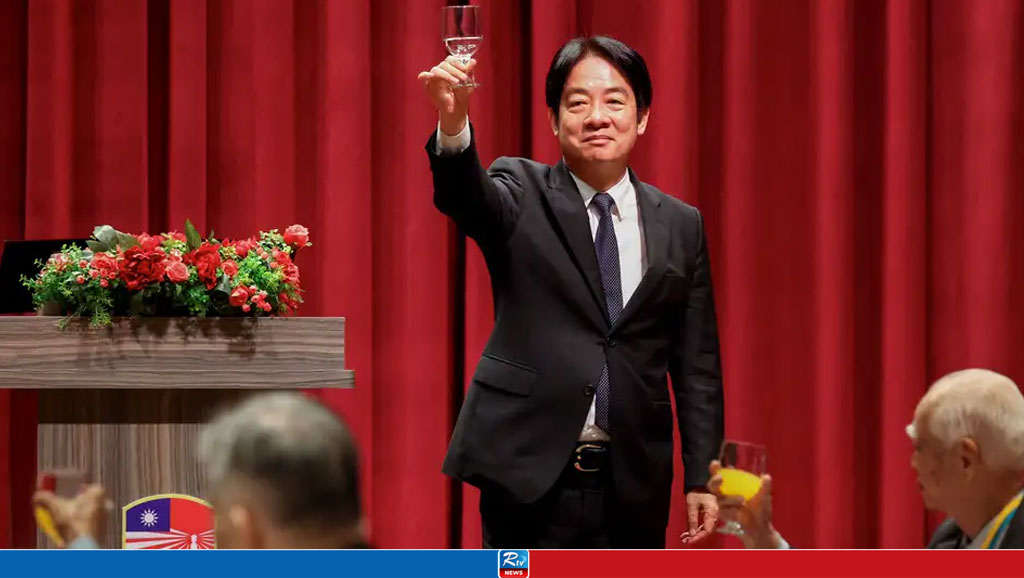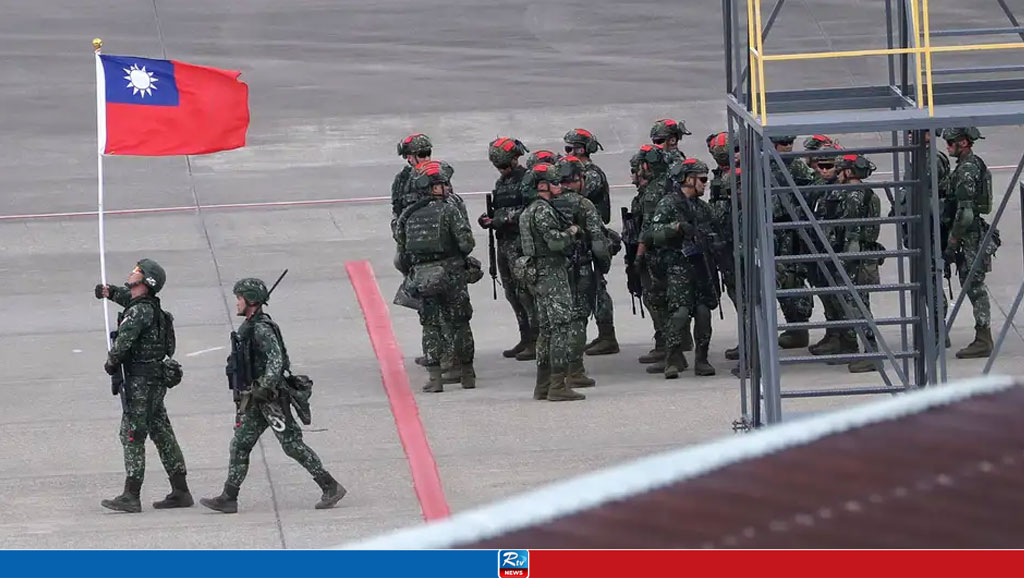A New Great Game: China, India, and the Dalai Lama

Beijing is challenging India’s historical connection with Buddhism, presenting it as an “ancient Chinese religion.” Its aim is political, its disregard for human rights is obvious.
The Panchen Lama, traditionally the second-highest leader in Tibetan Buddhism, holds immense spiritual and political power. However, this role has become entangled in a political struggle between the Dalai Lama and the Chinese government. Gedhun Choekyi Nyima, recognized by the Dalai Lama as the 11th Panchen Lama, was abducted by the Chinese government in 1995 at the age of six. In his place, the Chinese government appointed Gyaltsen Norbu, who lacks legitimacy among Tibetans and serves more as a political mouthpiece for the Communist Party.
Tibetans view Gyaltsen Norbu as a puppet, isolated and controlled by the Chinese authorities. He promotes Sinicization and communist ideology, urging Tibetans to assimilate into Chinese culture and accept the Party’s rule. This, naturally, draws ridicule and fuels non-acceptance, highlighting the failure of the Chinese government to gain true legitimacy in Tibet.
It is now well known that for the last few years China has begun framing Buddhism as an “ancient Chinese religion” and is granting its citizens a certain freedom to practice it. This move holds potential benefits for both domestic and international spheres.
Within China, the promotion of government-controlled Buddhism is seen as a tool for promoting social stability, particularly in restive areas like the Tibet Autonomous Region and other Tibetan communities. By emphasizing shared cultural heritage, the government hopes to ease tensions and foster cohesion. Beyond its borders, China seeks to leverage its growing role in Buddhism to gain influence in neighbouring regions. By establishing itself as a key patron and influencer of powerful Buddhist organizations, China aims to bolster its soft power and expand its geopolitical reach.
India, the birthplace of Buddhism, sees the religion through a different lens. India embraces Buddhism as a tool for both diplomacy and cultural preservation. On the one hand, India uses Buddhism to build stronger ties with its Southeast Asian neighbours who share the faith.
On the other, India offers a safe haven for Tibetan Buddhists fleeing religious persecution and sees the preservation of their traditions as an important duty. So, India recognizes its potential to foster both international relationships and the well-being of its diverse citizenry.
The future of Tibetan Buddhism and China’s control over Tibet hinge on the selection of the next Dalai Lama. The current Dalai Lama, aging and nearing the end of his life, remains a symbol of Tibetan religious and political aspirations, contested by China who considers Tibet its own.
Historically, Tibetan leaders resisted Chinese authority, while China, pointing to their past influence, asserts dominance. China desperately needs the Dalai Lama to return and recognize their rule. Failing that, they aim to appoint their own Dalai Lama, controlling the Tibetan religious hierarchy and solidifying their grip on the region.
This, however, risks further unrest and resentment, as centuries of tension have not softened Tibetan resistance to Chinese control.
China’s project is to challenge India’s historical connection to Buddhism and control the narrative around the Dalai Lama. India has consistently treated the Dalai Lama as a revered guest, recently underscoring this regard with birthday wishes from Prime Minister Modi.
This action resonates deeply, as India and Tibet share a centuries-old Buddhist bond. This historical link is further strengthened by Tibetan culture’s deep roots in Indian philosophy and practices, including the concept of reincarnation and the meticulous selection of the Dalai Lama.
However, this historical harmony was disrupted in 1949 when China invaded Tibet. India swiftly condemned the invasion and recognized Tibet’s independence, citing its established institutions and deep cultural ties to India. China’s subsequent aggression, both internally and towards India in 1962, aimed to erase Buddhist traditions and assert regional dominance.
Ultimately, the Dalai Lama’s escape to India in 1959 and India’s acknowledgement of Tibet’s stifled autonomy cemented the complex, intertwined history between Buddhism, India, and China.
Geshe Lhakdor, a respected Tibetan Buddhist scholar, argues that China’s attempts to lead the Buddhist world through spectacles like “World Buddhist Conferences” are a smokescreen. Their real motive is to legitimize their control over Tibet by installing their handpicked Panchen Lama, Gyaltsen Norbu, as the supreme Buddhist leader. This effort has backfired.
The world recognizes Norbu as a puppet, parroting Chinese propaganda. China’s obsession with this charade stems from its need to justify its brutal occupation of Tibet, marked by forced disappearances, torture, and suppression of Tibetan culture.
The plight of the Panchen Lama embodies both China’s oppression and Tibet’s resistance. Under Chinese rule, the traditional role and spiritual heritage of the Panchen Lama face an existential threat. Norbu’s subservience to the Chinese government is a hollow symbol of their failed attempt to control Tibetan Buddhism.
China’s disregard for human rights extends far beyond Tibet. Despite being a major world power, it fails to uphold international law and treaties, silencing dissent and oppressing minorities like Uyghurs and Mongolians. This refusal to respect basic human dignity and engage in international scrutiny exposes China’s true agenda.
The Uyghurs are a Turkic people with a rich history dating back thousands of years. They have established various kingdoms and empires, but for decades have faced challenges maintaining their independence. After several attempts at autonomy in the 20th century, China established the Xinjiang Uyghur Autonomous Region in 1955.
While initially peaceful, Uyghur grievances regarding immigration, cultural erasure, and economic disenfranchisement have intensified in recent years. Since 2017, China has faced accusations of mass detention, forced labour, and other human rights violations against Uyghurs, sparking international condemnation and concerns of genocide.
Despite China’s claims of normalcy, independent evidence suggests continued oppression and hardship for the Uyghur Muslim population in Xinjiang.
Similarly, the Chinese Communist Party (CCP) has implemented a policy mandating Mandarin Chinese as the medium of instruction in Inner Mongolia, replacing the region’s native Mongolian in core subjects like language, politics, and history.
This move sparked significant protests, with hundreds of ethnic Mongolians facing arrests or forced resignations from public office for expressing dissent. Beyond suppressing peaceful demonstrations, the CCP’s policy blatantly contradicts its own laws, which encourage minority language education.
This push for Mandarin assimilation mirrors similar tactics used against other ethnicities like Uyghurs and Tibetans, raising concerns about cultural suppression and forced national unification.
Chimeddorj, a local professor, poignantly summarizes the grave implications: “If our language is wiped out, we as a distinct people will also cease to exist.” The CCP’s actions highlight a broader pattern of cracking down on minority cultures and religions in the name of social stability and national unity, raising troubling questions about human rights and cultural preservation in China.
The world must remain vigilant. The Panchen Lama controversy is a microcosm of a larger struggle for human rights and cultural preservation. Only through unwavering Tibetan resistance and international solidarity can Tibet achieve justice and self-determination.
In conclusion, China’s manipulation of Tibetan Buddhism, epitomized by the Panchen Lama controversy, exposes a broader struggle involving human rights violations and cultural suppression. The abduction of Gedhun Choekyi Nyima and the imposition of Gyaltsen Norbu illustrate China’s attempts to control Tibet’s spiritual heritage. This strategic manoeuvring extends beyond Tibet, as seen in the Uyghur and Mongolian regions.
The Dalai Lama’s pivotal role in the power play signifies a geopolitical tussle between China and India, challenging historical ties. Geshe Lhakdor’s critique unveils China’s deceptive leadership in the Buddhist world, revealing a smokescreen to legitimize control. The world must remain vigilant, recognizing the urgency for human rights and cultural preservation, urging solidarity to counter China’s oppressive narrative and ensure justice for Tibet and beyond.
Comments
Taiwan 'Will Not Yield an Inch' of Land, Lai Says

Israel's Attack: All Flights from Iranian Airports Suspended

Israel Announces End of Attacks on Iran in Face of Resistance

19 Killed in Passenger Bus Accident in Mexico

Tropical Storm Trami Claims 126 Lives, Hundreds Missing in Philippines

Elon Musk Reveals Tesla 2025 Motorhome for UNDER $17,000

China Vows Countermeasures after US Arms Sale to Taiwan


 Live Tv
Live Tv




